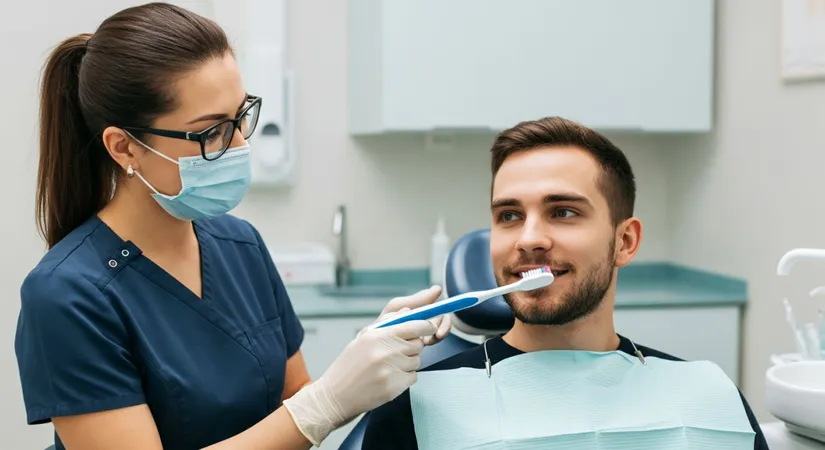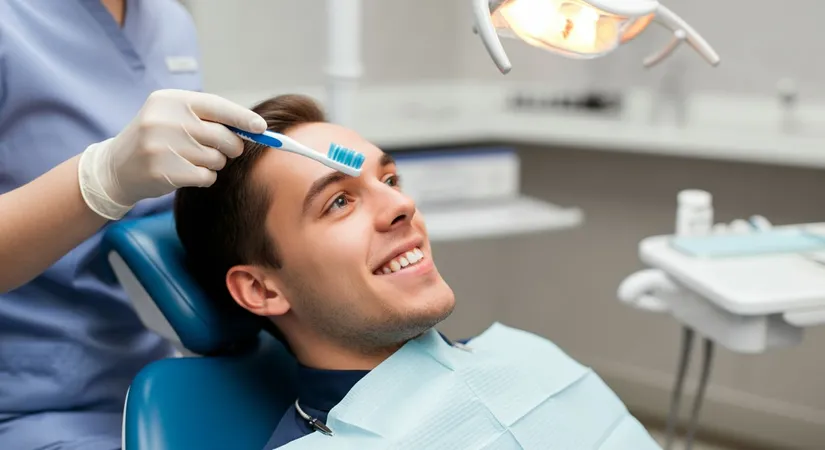Teeth Whitening: Achieve a Radiant Smile with Expert Care
Master brushing techniques for healthier gums and cleaner teeth. Start your journey to better oral health today!
Proper brushing techniques are crucial for maintaining optimal oral health. Every stroke of your toothbrush affects your gum health, plaque removal efficiency, and overall dental hygiene. With so many methods and products available, it's essential to focus on effective strategies that promote healthy gums and a clean mouth. This comprehensive guide will navigate you through the best oral hygiene practices, ensuring your dental care routine is as effective as possible.
Mastering the Art of Teeth Cleaning Methods
Understanding Effective Teeth Cleaning Techniques
Effective teeth cleaning methods are crucial for maintaining oral health. One key technique is flossing, which removes plaque and food particles between teeth. Regular flossing can reduce the risk of gum disease by up to 40%. Another method is using interdental brushes, which are particularly effective for cleaning around braces and bridges.
Incorporating mouthwash into your routine can also enhance oral hygiene. Antiseptic mouthwashes can reduce bacteria in the mouth, contributing to fresher breath and healthier gums. Studies show that using mouthwash can decrease plaque buildup by 20% when used alongside brushing and flossing.
Essential Tools for Optimal Oral Hygiene
- Floss: Essential for removing debris between teeth, reducing gum disease risk.
- Interdental Brushes: Ideal for cleaning around orthodontic appliances.
- Mouthwash: Helps reduce bacteria and plaque, promoting fresher breath.
- Start by flossing to remove debris between teeth.
- Use an interdental brush for areas floss can't reach.
- Finish with mouthwash to kill bacteria and freshen breath.

Step-by-Step Guide on How to Brush Teeth Properly
Mastering the Best Brushing Techniques for Healthy Gums
Proper brushing techniques are essential for maintaining healthy gums and overall oral hygiene. Begin by selecting a toothbrush with soft bristles to prevent gum irritation. Position the toothbrush at a 45-degree angle to your gums, which allows for effective cleaning of the gum line.
Use gentle, circular motions to brush the outer surfaces of your teeth. This technique helps in removing plaque without damaging the enamel. Spend at least 30 seconds on each quadrant of your mouth to ensure thorough cleaning.
Effective Brushing Techniques for Plaque Removal
- Use a soft-bristled toothbrush to avoid enamel damage and gum irritation.
- Brush at a 45-degree angle to effectively clean the gum line.
- Employ circular motions to gently remove plaque and debris.
- Start with the outer surfaces, using circular motions for thorough cleaning.
- Move to the inner surfaces, maintaining the 45-degree angle.
- Finish with the chewing surfaces, ensuring no area is missed.

Effective Brushing Techniques for Plaque Removal
Innovative Approaches to Plaque Removal
To effectively combat plaque, it's essential to adopt innovative brushing techniques. One approach is using a two-minute timer to ensure adequate brushing time. Studies indicate that brushing for two minutes can significantly reduce plaque buildup compared to shorter durations.
Another technique involves the use of disclosing tablets, which highlight plaque areas that need extra attention. These tablets can be particularly useful for children, making brushing more engaging and educational. Additionally, incorporating a tongue scraper into your routine can help remove bacteria that contribute to plaque formation.
Advanced Tools for Comprehensive Oral Hygiene
- Electric Toothbrush: Provides superior plaque removal with oscillating or vibrating bristles.
- Disclosing Tablets: Visually indicate areas with plaque, enhancing brushing effectiveness.
- Tongue Scraper: Reduces bacteria on the tongue, supporting overall oral health.
- Begin by using disclosing tablets to identify plaque-prone areas.
- Brush with an electric toothbrush for optimal plaque removal.
- Finish with a tongue scraper to eliminate additional bacteria.
Essential Oral Hygiene Tips for Daily Dental Care
Comprehensive Oral Hygiene Practices
Maintaining optimal oral health requires a multifaceted approach beyond basic brushing. Incorporating flossing into your daily routine is crucial for removing debris and plaque between teeth, areas often missed by brushing alone. Studies show that regular flossing can reduce the risk of gum disease by up to 40%.
Using mouthwash is another effective method to enhance oral hygiene. Antiseptic mouthwashes can kill bacteria that brushing and flossing might leave behind, contributing to fresher breath and healthier gums. Research indicates that using mouthwash can decrease plaque buildup by 20% when combined with other oral hygiene practices.
Balanced Diet and Regular Dental Check-Ups
- Consume a balanced diet rich in calcium and vitamins to support strong teeth and gums.
- Avoid sugary snacks and drinks that can contribute to tooth decay and cavities.
- Stay hydrated to maintain saliva production, which helps neutralize acids in the mouth.
- Schedule regular dental check-ups for professional cleaning and early detection of issues.
- Discuss personalized oral care plans with your dentist to address specific needs.
- Follow up on any recommended treatments or procedures to maintain oral health.
Innovative Brushing Techniques for Optimal Oral Health
Effective Oral Care Strategies for Long-Term Dental Health
Frequently Asked Questions
What are the best brushing techniques for healthy gums?
How can I effectively remove plaque using brushing techniques?
What tools are essential for optimal oral hygiene?
How can I ensure my dental care routine is effective?
Why is toothbrush selection important for oral health?
Discover the path to 'Healthy Beauty' with estethica's expert care. Call now for your free consultation and take the first step towards a more confident you!
📞 Call for Your Free Consultation